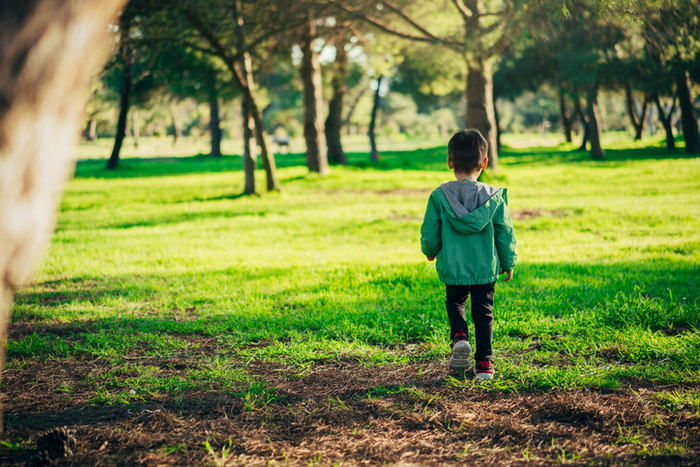Try to avoid busy areas and prefer green areas, in winter it is better to stay away from home during the hottest hours;
move on foot, by bike or by public transport to reduce your environmental impact and if you are driving a car, moderate your speed and turn off the engine when stationary.
These are some of the recommendations of the
Italian Society of Paediatrics
to protect children from exposure to smog and pollute less.
The high levels of fine dust and other pollutants recorded in the Po Valley have aroused particular attention in public opinion and some concern on the part of parents for the health of children, we read in a note.
Sip, in light of the scientific literature available to date, sheds light on the effects of air pollution on the health of children and on what each of us can do individually to protect them and to help reduce, as much as possible, the pollution through the adoption of good practices and correct lifestyles.
"If it is true that the solution to the problem is mainly entrusted to public health programs decided and guided by the institutions - specifies the president of Sip, Annamaria
Staiano
- it is equally important to remember how each of us can make a difference by adopting virtuous behaviors to help reduce air pollution and improve everyone's health".
The effects of smog on children's health.
As noted by the Environment Commission of the Italian Society of Paediatrics, extensive scientific evidence confirms the existence of a strong association between air pollution, mainly generated by traffic, and respiratory health problems in children.
These are in fact more vulnerable than adults, both because their organism is developing and because they have a greater predisposition to breathe through their mouth, avoiding the nasal 'filter', and because they spend more time in the open air.
The effects of traffic pollution on children's respiratory health can be acute, due to short-term exposure to high concentrations of pollutants, particularly frequent during peak traffic hours;
or chronic, i.e. appearing after prolonged exposure to levels of pollutants that are not necessarily high.
Epidemiological studies have shown that exposure during pregnancy to pollutants from vehicular traffic, such as particulate matter and nitrogen oxides, is associated with an increased risk of developing asthma.
Large studies have also shown that children residing in urban-metropolitan areas since birth have an increased risk of developing respiratory diseases.
Short-term effects can include acute asthma attacks and airway infections such as ear infections, pneumonia and bronchiolitis.
Furthermore, asthmatic children living in polluted environments experience an increase in exacerbations, emergency visits and hospitalizations.
Among the long-term effects is the possible contribution to the decline in respiratory function.
Recent data, although less consolidated, also suggest an association between exposure to pollutants and other adverse health effects.
In particular, exposure to PM2.5 in the prenatal period has been associated with low weight, prematurity and, albeit to a lesser extent, congenital anomalies such as heart disease.
“In particular, we must pay attention to the so-called 'first thousand days', the period of time that goes from conception to the first two years of life, which is a particularly important period in a person's life because what happens in this period of time has effects, even long-term, on the health of that individual.
There are several important studies that have shown us how environmental pollutants can also play a role from this point of view and leave a decisive impact on the rest of an individual's life", explains Rino Agostiniani, Sip national councilor.
How to protect the little ones and pollute less:
Travel rarely in busy areas.
When environmental risks increase, it would be preferable to go out exclusively in green areas, avoiding long transits in particularly busy areas, remembering that walking around with the stroller in highly trafficked streets certainly generates greater risks as the child is at the height of the exhaust fumes.
Get around on foot, by bike or by public transport.
Then, as part of a broader reflection on what can not only be done to protect one's child, but to reduce one's own environmental impact and that of the family unit, one of the simplest indications coming from paediatricians is that, when possible , to move on foot, by public transport or by bicycle.
Choosing reference locations for your businesses that are located in the neighborhood, especially in large cities, can help.
From school, to shopping, to the afternoon hobbies of the little ones.
In winter outside during the hottest hours, in summer the opposite.
During the winter, with the cold, particulate matter condenses to form aerosol droplets that are more easily inhaled: it is therefore better to stay away from home during the hottest hours, while in summer the central hours of the day are the ones to avoid, because in the summer months the levels of ozone increase over the course of the day as the temperature increases.
Driving at moderate speed and engine off when stationary.
When driving, preferring less polluting car models if possible, it is important to respect the provisions on access limits to limited traffic areas or traffic bans in the green belt on particularly polluted days, moderate speed, keep the engine off if not necessary .
Make your condominium 'green' too.
A lot can also be done at home: for example, raising the awareness of the condominium to evaluate the opportunity for heating with a lower impact on the environment, taking into account the fact that heating systems using non-gaseous fuels should be converted to methane and Existing condominium heating should be renovated according to the technologies of thermoregulation of room temperature and heat metering.
Reproduction reserved © Copyright ANSA

